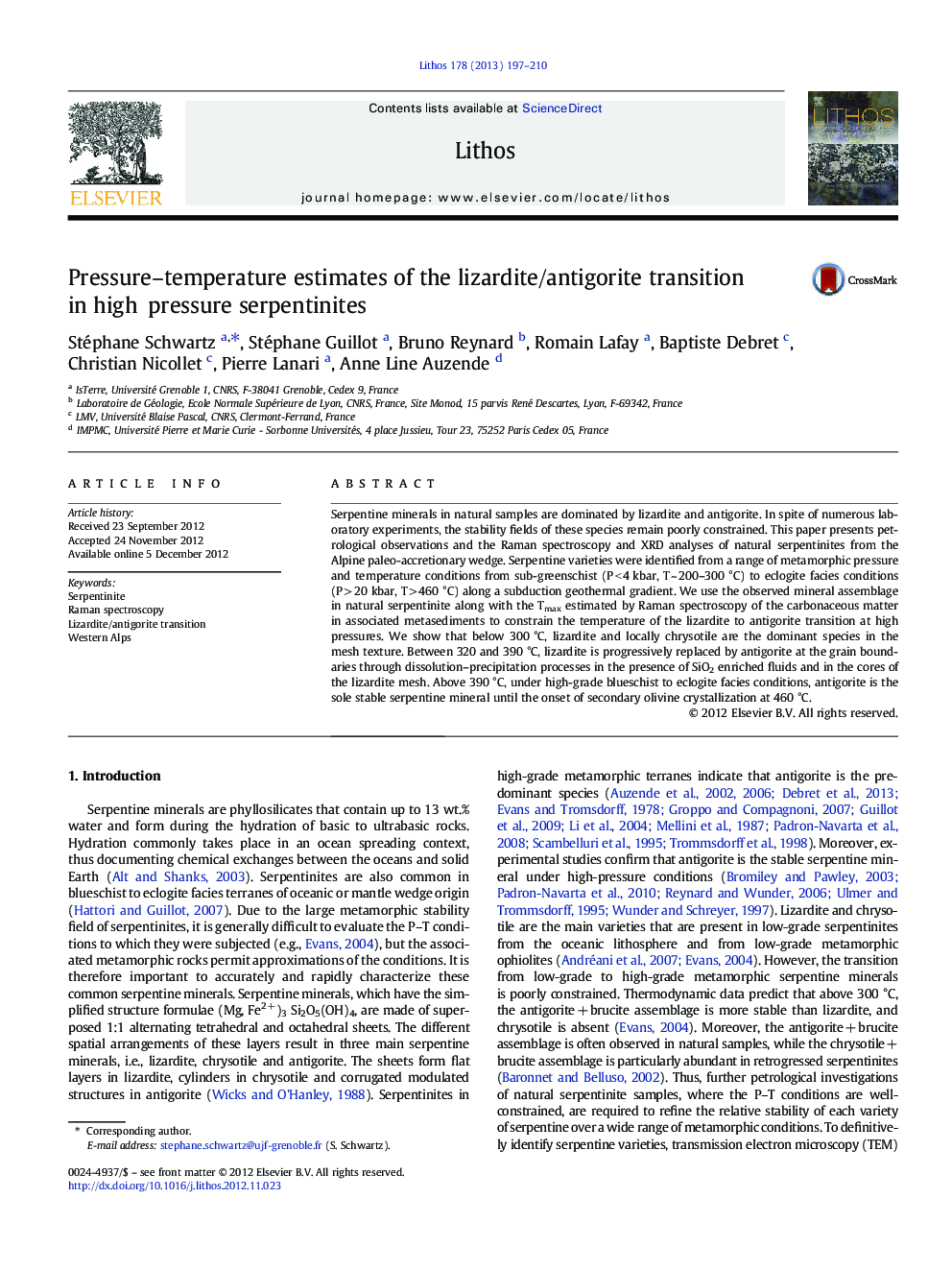| Article ID | Journal | Published Year | Pages | File Type |
|---|---|---|---|---|
| 4716260 | Lithos | 2013 | 14 Pages |
Serpentine minerals in natural samples are dominated by lizardite and antigorite. In spite of numerous laboratory experiments, the stability fields of these species remain poorly constrained. This paper presents petrological observations and the Raman spectroscopy and XRD analyses of natural serpentinites from the Alpine paleo-accretionary wedge. Serpentine varieties were identified from a range of metamorphic pressure and temperature conditions from sub-greenschist (P < 4 kbar, T ~ 200–300 °C) to eclogite facies conditions (P > 20 kbar, T > 460 °C) along a subduction geothermal gradient. We use the observed mineral assemblage in natural serpentinite along with the Tmax estimated by Raman spectroscopy of the carbonaceous matter in associated metasediments to constrain the temperature of the lizardite to antigorite transition at high pressures. We show that below 300 °C, lizardite and locally chrysotile are the dominant species in the mesh texture. Between 320 and 390 °C, lizardite is progressively replaced by antigorite at the grain boundaries through dissolution–precipitation processes in the presence of SiO2 enriched fluids and in the cores of the lizardite mesh. Above 390 °C, under high-grade blueschist to eclogite facies conditions, antigorite is the sole stable serpentine mineral until the onset of secondary olivine crystallization at 460 °C.
► Characterization of the lizardite / antigorite transition in natural HP serpentinites. ► Antigorite progressively replaces lizardite under LT- to MT-blueschist conditions. ► Antigorite appears at the lizardite grain boundaries by dissolution-precipitation. ► Above 390 °C antigorite is the only stable serpentine species. ► Beyond 460 °C antigorite begins to destabilize into olivine.
